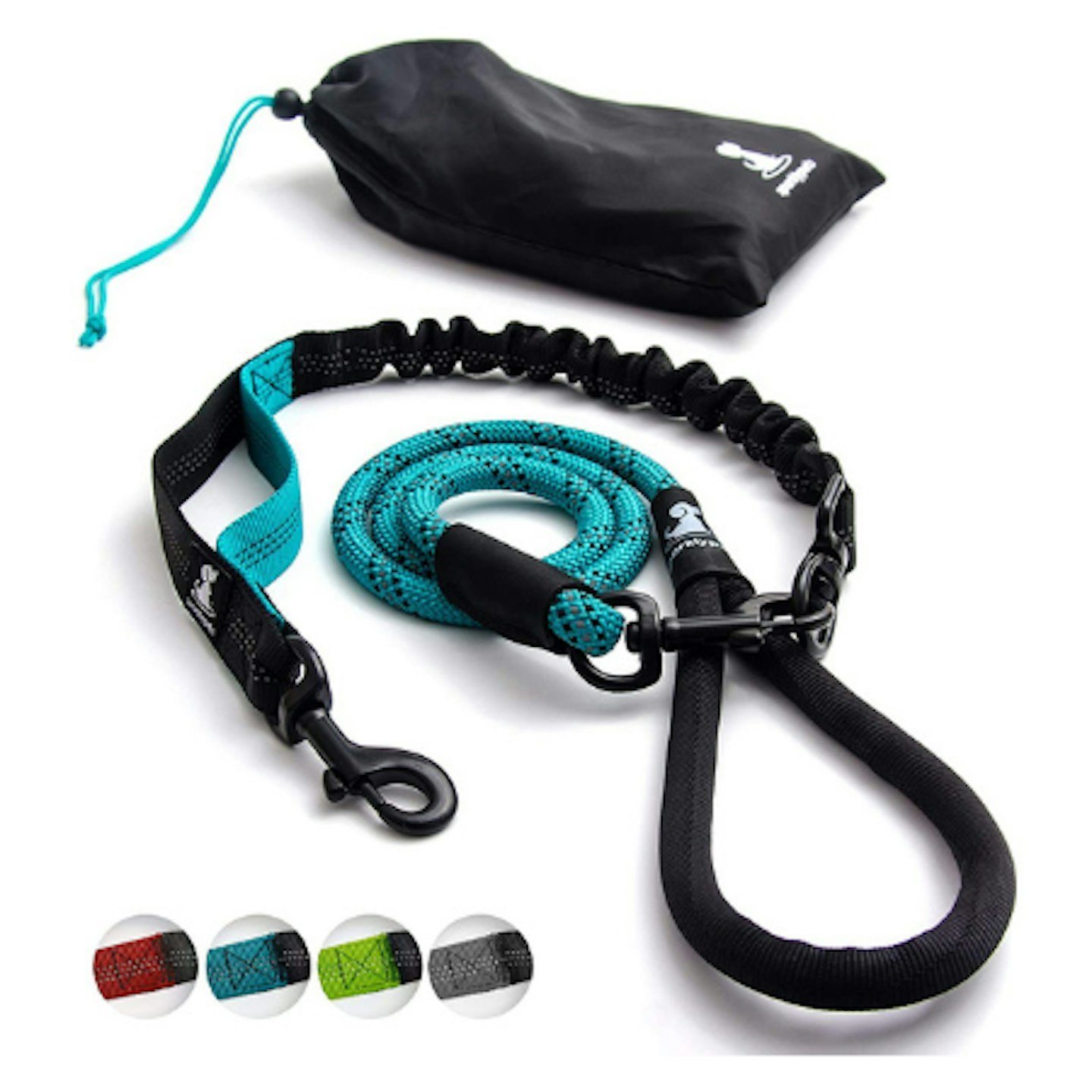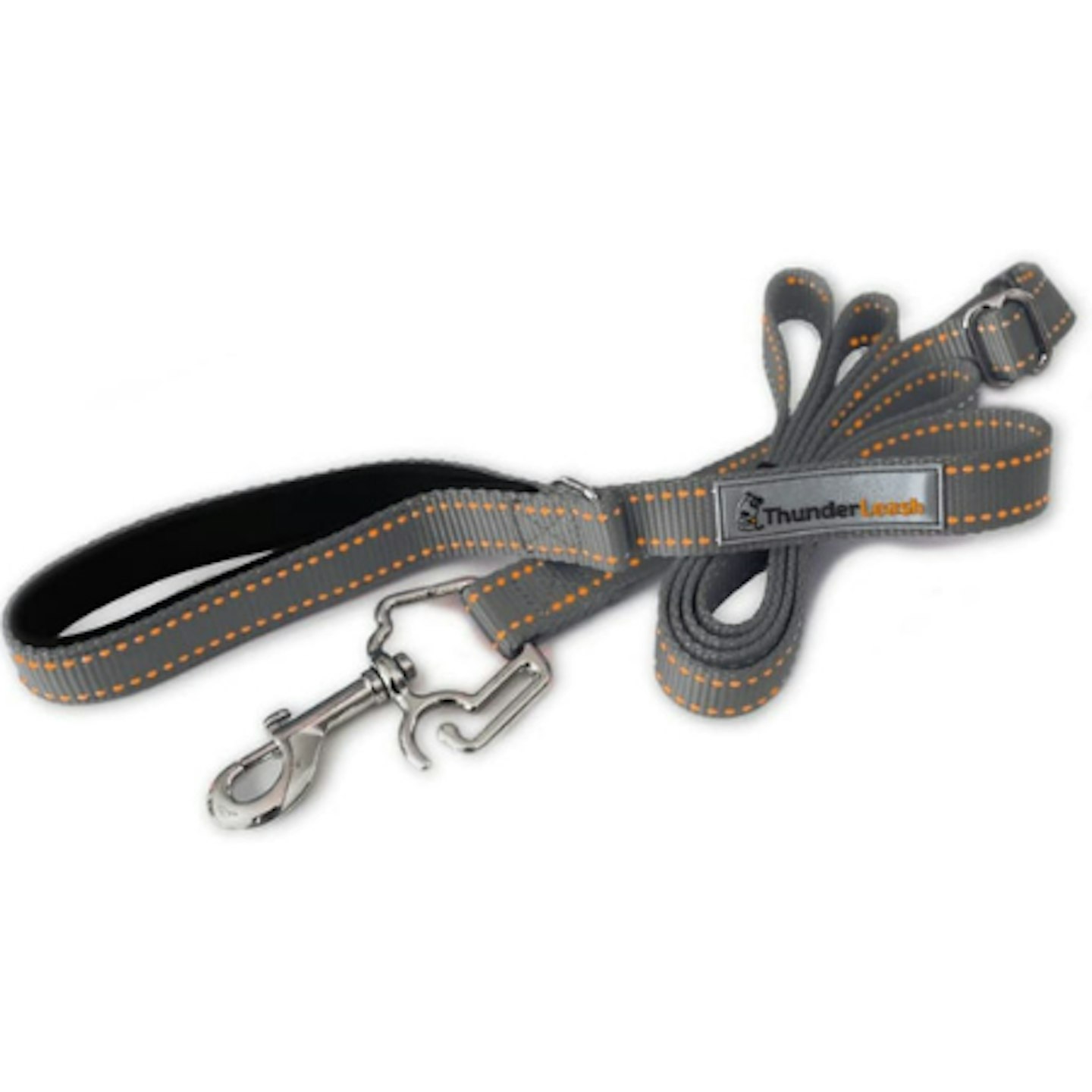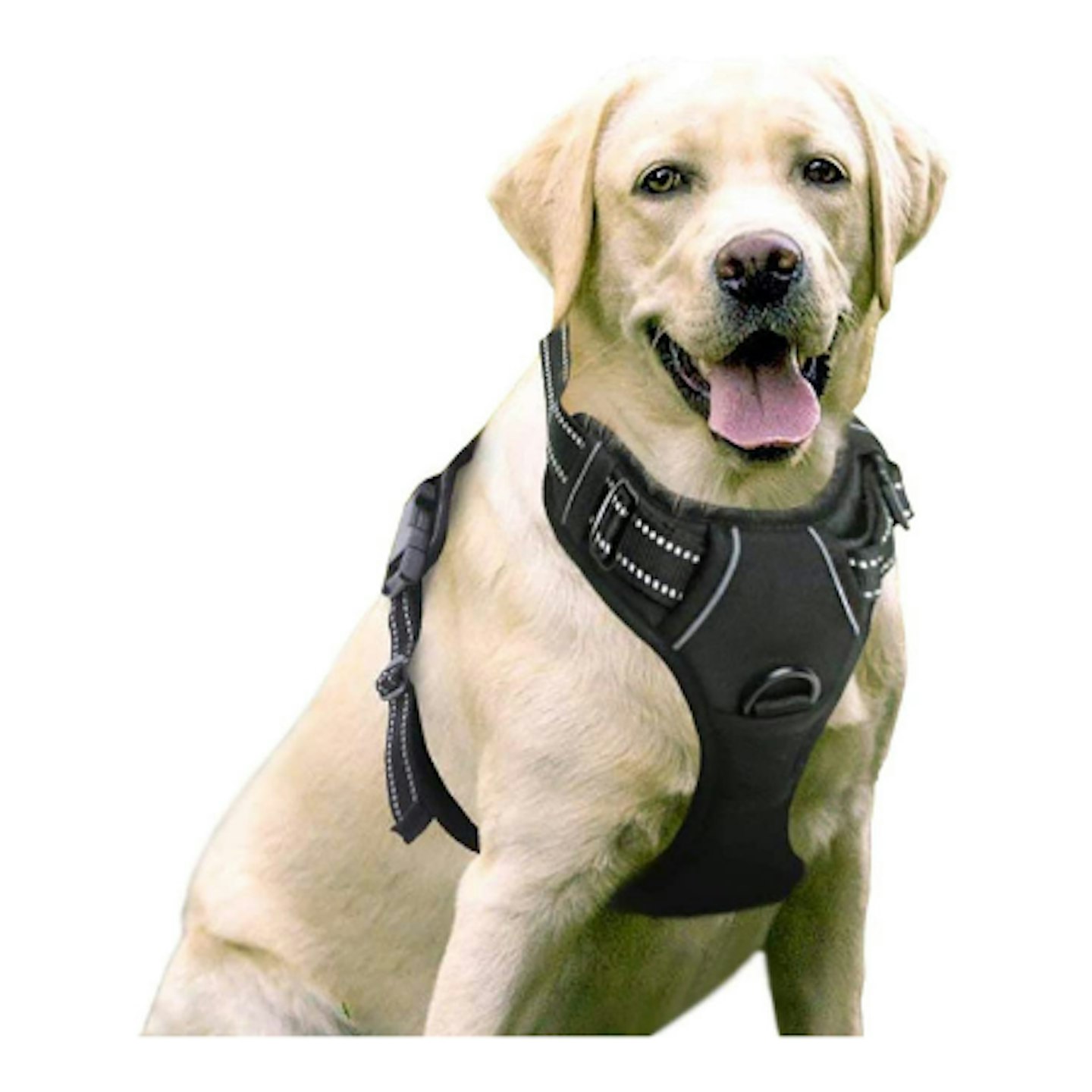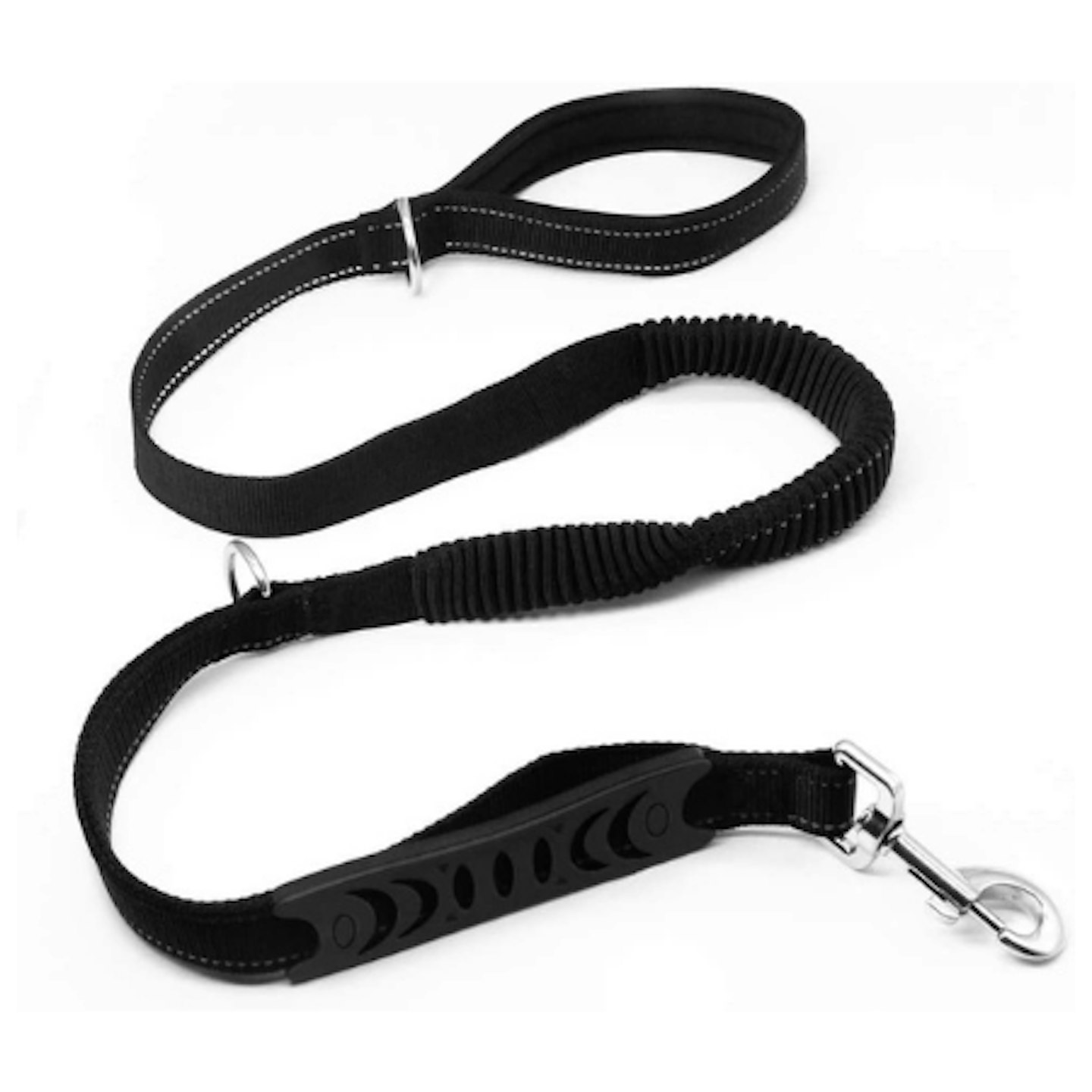We love our furry companions, but sometimes they can be a bit, well, trying. While all dogs can pull, if a very small dog is pulling, you can usually, easily stop them from doing so. That doesn't make it any less annoying, though.
A larger issue arises if you have a larger and heavier dog (or just a very strong pupper) and they decide to pull, as you'll most likely find it quite difficult to stop them.
Not only is it quite jarring when they do randomly pull, but it can also be quite dangerous.
There are plenty of reasons as to why dogs pull on the lead, be it because they're overactive, or not properly lead trained. Whatever the reason is, it can be helped by purchasing a suitable lead.
Many dog owners actually use the wrong collar and lead for their dogs, and whilst buying the correct one won't automatically stop your furry friend from pulling, it can lessen the strength of the pull and ultimately absorb a lot of the strain and shock from unexpected pulls.
We've rounded up the best leads for dogs that pull, so if you're unsure which one is best for your dog or even how to properly lead train your dog, you're in the right place.
We have also asked a dog behaviourist from tails.com questions on why dogs pull, what leads are best for which dogs, and more. Check out our FAQs section for the full breakdown.
The best leads for dogs that pull
Editor's pick

This is without a doubt one of the best leads for dogs that pull. Despite its length and heavy-duty design, it manages to be fairly lightweight and has excellent shock absorption, ideal for those unexpected pulls. It's made from nylon rope and features strong, metallic grips to help keep your dog in place if they try to pull.
Review: "My dog likes to pull so we bought this leash and it 100% helps. As soon as he feels a bit of tension from the suspension in the leash he does slow down, however, the weight of the leash from the clips in the middle does seem to bother him every once in a while. The leash has high-quality material, a comfy handle, a nice carry bag, and amazing colour options, you can’t go wrong. BUY IT! I don’t think wear and tear will soon opt me to need to buy this leash again any time soon, but I will be purchasing it again if it goes missing or it could also make a good gift for friends with new pets!"
Best harness for dogs that pull
If your dog requires a harness to go with their new lead, consider this product from Mokcci. It's available in several different sizes and bright, reflective colours (ideal for nighttime walks). We also love how efficient it is in discouraging dogs from tugging or pulling on the lead, as it has a close grip to ensure you're in control. The material is durable and scratch-resistant, too!
Review: "My 2-year-old Parsons Jack Russell is a nightmare to take for a walk, she constantly pulls and goes deaf when trying to train her, she is very stubborn, I bought this harness as a last resort, how I wish I had had one sooner, she doesn't like it but she will get used to it. For the first time this morning, she walked by my side and it was brilliant."
Best lead for big dogs that pull
Got a stubborn large dog that just won't stop tugging on their lead? Then this heavy-duty dog lead may just be the one for you. It features reflective stitching so it's ideal for walks in low visibility conditions and at nighttime. We love how shock absorbent it is and the 360u00b0 rotatable buckle feature, which prevents the belt from getting tangled.
Review: "Holds my 120lb bullmastiff". - We think that's enough said!
Best for small dogs that pull

Simple and basic, yet it efficiently does the job. This lead from ThunderLeash is an excellent choice for anyone with a dog that keeps pulling or tugging on the lead. The brand says it's recommended by positive-based trainers around the country and is over 80% effective. It's also waterproof, so feel free to take your dog out in the rain or let them go for a swim.
Review: "Definitely less pulling with this leash. I have an American Staffordshire terrier mix 40 lbs but strong as can be (my 195lbs Great Dane is easier to walk than her lol) I was using a quality harness but found it hot for the summer. I'll keep the harness for hiking and use the ThunderLeash for our regular adventures."
Best harness for larger dogs

This harness is made from a durable and tough material, but it simultaneously features an air-padded, breathable sponge both on the back and the chest parts of the harness. You can rest assured your furry friend will be very comfortable. It also features attachments made from zinc-alloy, which are incredibly strong and can resist most pulling - even from larger dog breeds.
Review: "This is a fantastic harness once you get it adjusted to your dog. My dog was awful to take on walks - he is 70+ pounds and would pull my shoulder out of the socket if he saw a squirrel or anything else that needed to be investigated/chased. By clipping the leash to the front (on the dog's chest), if he pulled, he got spun around towards me… which frustrated him very quickly and stopped the pulling!! It's amazing and I can enjoy taking him for walks now."
FAQs
Do I need a harness or a lead?
According to Carolyn Menteith, a dog behaviourist at tails.com, "Harnesses are ideal for both small dogs and larger ones. When walking small dogs, especially if they haven’t been trained to walk nicely on the lead, so often the lead pressure is upwards (because we are so far above them).
"With a collar, this puts a constant, sometimes jerking, pressure on their delicate throat area. A harness prevents this and spreads any pressure evenly. Also, tiny dogs can be experts at slipping out of a collar!"
What type of lead/harness would you recommend for dogs that pull?
Carolyn tells us, "There are several options that are recommended by dog owners - from a collar or a chain to a headcollar or a harness."
"While a plain collar is traditional and what many people are used to, there is enough research to show that they can cause injury and long-term damage to the delicate structures in your dog’s neck - even from just low levels of pulling. They can cause tissue damage, increase pressure in the eye, potentially affect the thyroid, and compress the blood vessels. Not only that but the pressure on the dog’s windpipe can affect their breathing and their ability to pant to cool down.
"As for what harness is best - it’s a bit like asking you what dress I should wear! Every dog is different. It depends on size, shape, the extravagance of movement, degree of hairiness, how thin-skinned they are, what kind of exercise they are doing... What works well for one dog won’t work for another. A good harness won’t slip, won’t rub, certainly won’t tighten in any way, won’t put pressure on your dog’s neck, and will leave the dog’s shoulder and front legs free to move fully. Comfort is always more important than appearance!"
Why do dogs pull?
Carolyn explains, "Dogs pull for several reasons. One is that often they have a faster walking speed than us - and so in our dog’s eyes, we are dawdling!"
"Also, dogs want to get where they are going quickly so they can enjoy the fun of the park, their favourite places, or meet their doggy friends, so they pull in the hope they will get there faster. And the other reason they pull is that walking nicely on a lead is boring - and because they have never been trained not to!"
What to read next:
The best calming products for dogs and cats for your return to office life
Isabel Martins is a Commercial Content Writer for What's The Best, specialising in technology.
Subscribe to the What’s The Best Newsletter to keep up to date with more of the latest reviews and recommendations from the What’s The Best team.


